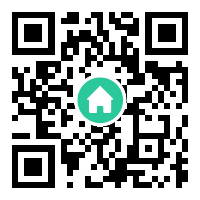Telegram open-source has become a cornerstone of modern secure messaging, blending privacy-focused design with community-driven innovation. Since its launch in 2013, Telegram has differentiated itself by embracing transparency, allowing developers and users alike to scrutinize its codebase. This commitment to open-source principles not only builds trust but also fosters a collaborative ecosystem where third-party contributors can refine features, identify vulnerabilities, and propose improvements. As debates around digital privacy intensify, Telegram’s approach offers a compelling model for balancing security, usability, and openness.
The Foundation of Telegram’s Open-Source Philosophy
Telegram’s decision to open-source its client-side code was a strategic move to address growing skepticism about proprietary messaging platforms. By publishing code for its Android, iOS, and desktop apps on platforms like GitHub, Telegram invites global developers to audit its encryption protocols and infrastructure. This transparency is critical in an era where data breaches and surveillance concerns dominate headlines. Unlike closed systems, Telegram open-source allows independent verification of its claims, ensuring that its much-touted MTProto encryption protocol isn’t just marketing jargon but a verifiable safeguard.

Security Through Community Collaboration
One of the most significant advantages of Telegram open-source is its reliance on community expertise. The platform’s bug bounty program, which rewards researchers for identifying vulnerabilities, has led to numerous security enhancements. For example, in 2022, a third-party developer discovered a potential flaw in Telegram’s file-sharing mechanism, which was promptly patched before exploitation. This collaborative model contrasts sharply with opaque systems where vulnerabilities may remain hidden until exploited maliciously. By crowdsourcing security, Telegram transforms its user base into proactive guardians of privacy.
Customization and Third-Party Innovation
Beyond security, Telegram open-source has unlocked unprecedented customization. Developers have created alternative clients like Unigram (for Windows) and Telegram X (experimental UI), tailoring the app to niche user needs. The open API has also spurred bot development, with over 500 million automated accounts enhancing functionalities—from language translation to e-commerce. Such innovations highlight how open-source ecosystems can democratize technology, empowering even small teams to compete with corporate-driven feature rollouts.
Challenges and Criticisms
Despite its strengths, Telegram open-source faces scrutiny. Critics argue that while client code is accessible, server-side components remain proprietary—a “selective transparency” that raises questions. Additionally, the platform’s encrypted “secret chats” use end-to-end encryption (E2EE) by default only in one-on-one conversations, unlike Signal’s universal E2EE. These limitations underscore the complexities of balancing open-source ideals with practical constraints like scalability and user experience. However, Telegram’s incremental improvements, such as introducing E2EE for group calls in 2023, demonstrate responsiveness to feedback.
The Future of Open-Source Messaging
Telegram open-source is more than a technical choice; it’s a statement about the future of digital communication. As governments push for backdoor access to encrypted platforms, Telegram’s auditable codebase provides a counter-narrative: security doesn’t require secrecy. Looking ahead, integrating decentralized technologies like blockchain or federated servers could further advance its mission. By maintaining its open-source ethos while adapting to emerging threats, Telegram positions itself as both a pioneer and a testbed for next-generation privacy tools.
In conclusion, Telegram open-source redefines what it means to build trust in the digital age. Through transparency, community collaboration, and relentless innovation, it challenges the status quo of closed ecosystems. While not without flaws, its journey offers invaluable lessons for tech companies aiming to reconcile user demands for privacy with the realities of modern connectivity.












